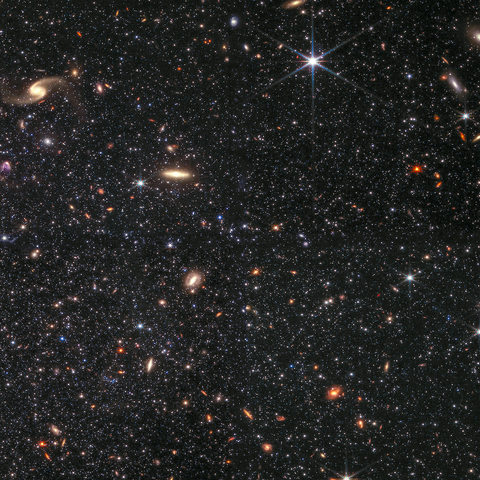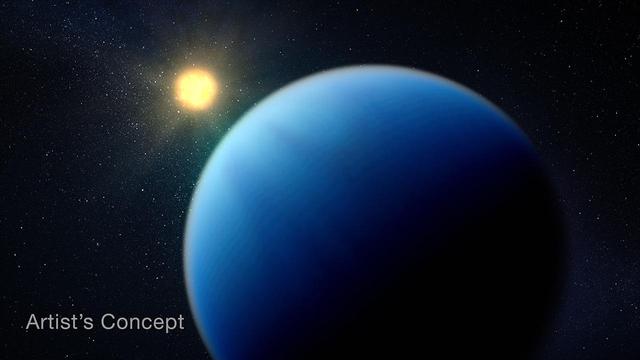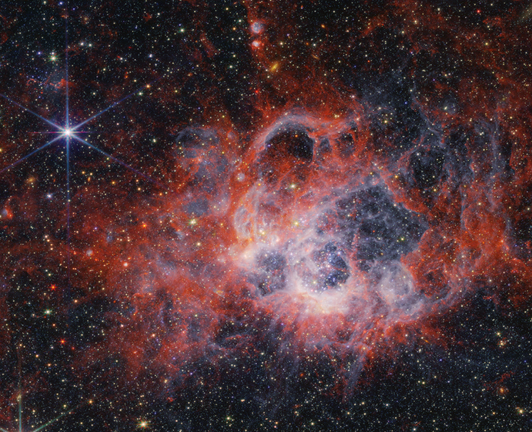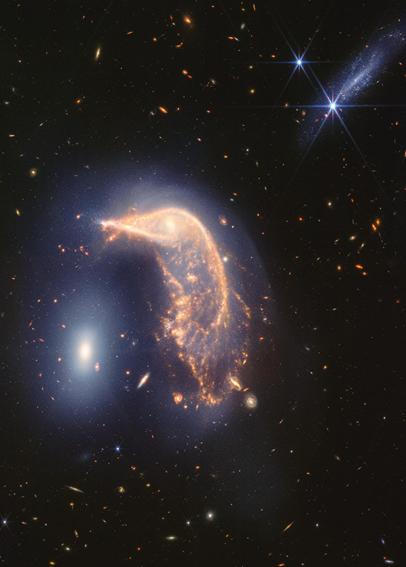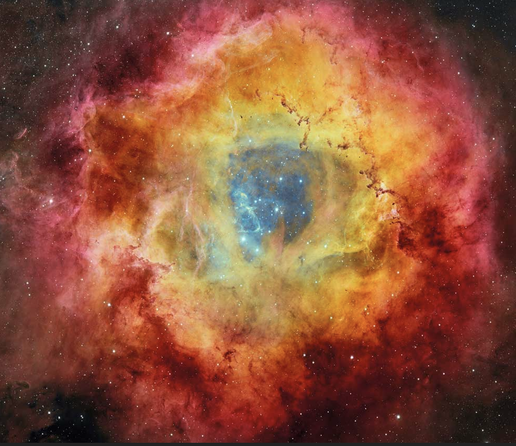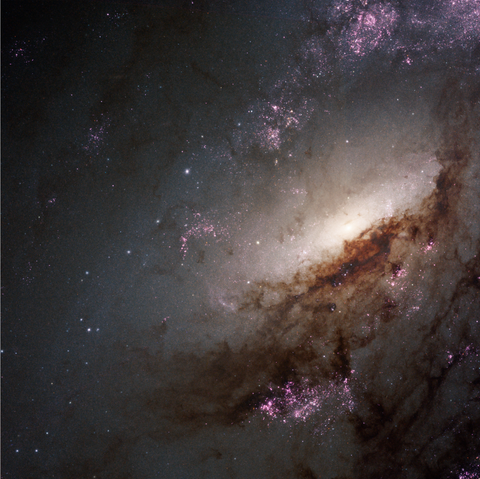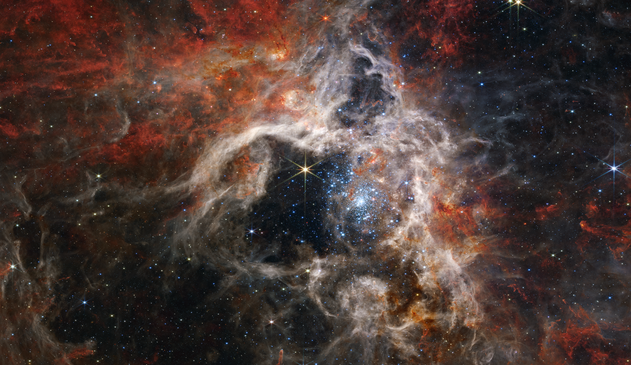Hubble has uncovered a supermassive black hole that was only revealed when a hapless star was ripped apart in a spectacular burst of energy. There may be more wandering supermassive black holes like this lurking inside galaxies: https://bit.ly/4j51XYo
Mission Operations Center for the James Webb Space Telescope. Also operating the Hubble Space Telescope and upcoming Roman Space Telescope.
Experience the Cosmic Cliffs like never before! #NASAWebb’s iconic image of dusty “mountains” and “valleys” is featured in a new 3D visualization from NASA’s Universe of Learning: webbtelescope.pub/4jRHIh9
Launched into orbit 35 years ago, Hubble remains one of the most valuable pieces of technology in our search for information about the universe.
Credit: NASA Goddard Space Flight Center, ESA, and STScI.
Exploring a new neighborhood can be exciting. 🏠 🏡
After its commissioning, #NASAWebb looked at one of our neighbors: dwarf galaxy WLM. This portion of the galaxy, which shows many faint stars, demonstrates Webb’s ability to study stellar populations: https://bit.ly/3XUcn4y
Hot sub-Neptunes are larger than Earth, smaller than Neptune, and orbit closer to their stars than Mercury orbits the Sun. These planets are common across the galaxy, but absent from our solar system. Check out what #NASAWebb discovered: https://webbtelescope.pub/4jcqydW
#NASARoman will track cosmic changes over time in unprecedented scale and clarity. Discover the dynamic universe with Roman. Credit: NASA, STScI, Caltech/IPAC.
https://www.youtube.com/watch?v=i4TDwzti0T4
Take a look at the stars of the Taurus constellation in three dimensions. The familiar pattern on the sky distorts into a whole new perspective. ✨
https://youtu.be/eXypAmN2fyM
Slow your scroll! Watch an animation showing how winds and light from massive stars form pillars. The pillars’ tips are the densest.
Where have you seen pillars? Show us #NASAWebb and Hubble images in the comments!
Read more: https://bit.ly/41HF2Mj
NGC 604, seen here by #NASAWebb, contains more than 200 of the hottest, most massive types of stars. All of these stars are in the early stages of their lives, giving astronomers and opportunity to study their development: https://bit.ly/3FkTe5g
Today is #WorldPenguinDay! This infrared image from #NASAWebb, taken to mark its second year of science, shows an interaction between a distorted spiral galaxy at center, the Penguin, and the compact elliptical galaxy at left, the Egg.
Take a closer look: webbtelescope.pub/3EP21MO
Take a close-up look at a small portion of the magnificent Rosette Nebula, as photographed by Hubble. Though Hubble cannot take 3D pictures, this video is a visualization treatment of the photo to give a sense of depth with foreground and background stars.
https://youtu.be/fs96MQSyXXA
Zoom across 6,500 light-years through a star-studding field to visit the planetary nebula NGC 2899, as photographed by Hubble for its 35th anniversary.
https://youtu.be/1ukMbEN4ijk
Forming stars are hidden inside thick cocoons of dust, emitting light in several wavelengths that pass through the dust clouds and can be detected by different telescopes.
Slide through the wavelengths to see stars forming in the Rosette Nebula: https://viewspace.org/interactives/unveiling_invisible_universe/star_formation/rosette_nebula
Hubble has spent 35 years in orbit! Celebrate with an array of compelling images recently taken by Hubble: Mars, dramatic views of stellar birth and death, and a magnificent spiral galaxy: bit.ly/4jjsAs7
CNN's "The Whole Story with Anderson Cooper" takes a look at the James Webb Space Telescope as it takes us on a journey to the beginning of time to hopefully answer humanity’s most existential questions. STScI's Ori Fox joins the conversation.
https://youtu.be/-btuvdE29jg?si=MxammXEkCm39j1U-
In this Hubble image of galaxy NGC 4258, young stars show up in ultraviolet light, older stars in its core are white, and dust shimmies and scurries across the bottom in brown.
Credit: NASA, ESA, STScI.
This towering structure of billowing gas and dark, obscuring dust might only be a small portion of the Eagle Nebula, but it is no less majestic in appearance for it. This new Hubble image is part of ESA/Hubble’s 35th anniversary celebrations, coming later this week.
https://youtube.com/shorts/CzkD1XtaW80?feature=share
Zoom through space to arrive at NGC 1333, a dark nebula bursting with star formation, as seen by Hubble. Raw material surrounding the nebula fuels a firestorm of star birth that is taking place inside a dusty cocoon. Credit: NASA, ESA, STScI.
The blue star cluster shining in the center of the Tarantula Nebula—seen in this #NASAWebb image, was born within the ribbons of silk-like dust that surround it. In time, all of this dust will either be blown away by or absorbed into new stars and planets: https://bit.ly/4bI5Tv5
Explore the formation of a star, as only #NASAWebb can. This 3D tour exposes the structures around the protostar L1527 IRS in infrared light. Telescopes that observe visible light see L1527 as a dark, featureless cloud.
https://www.youtube.com/watch?v=zqkcZhcfTOs

